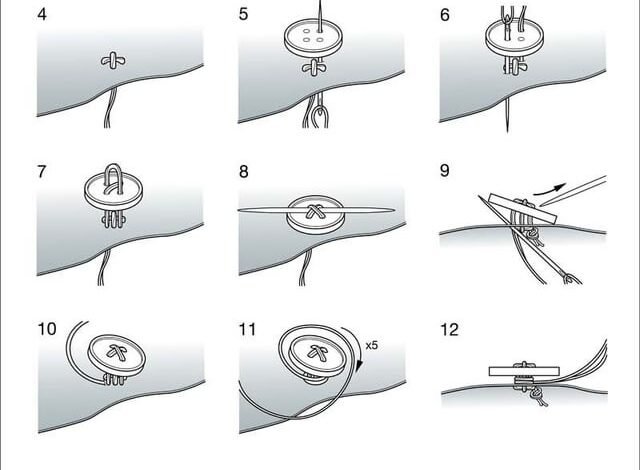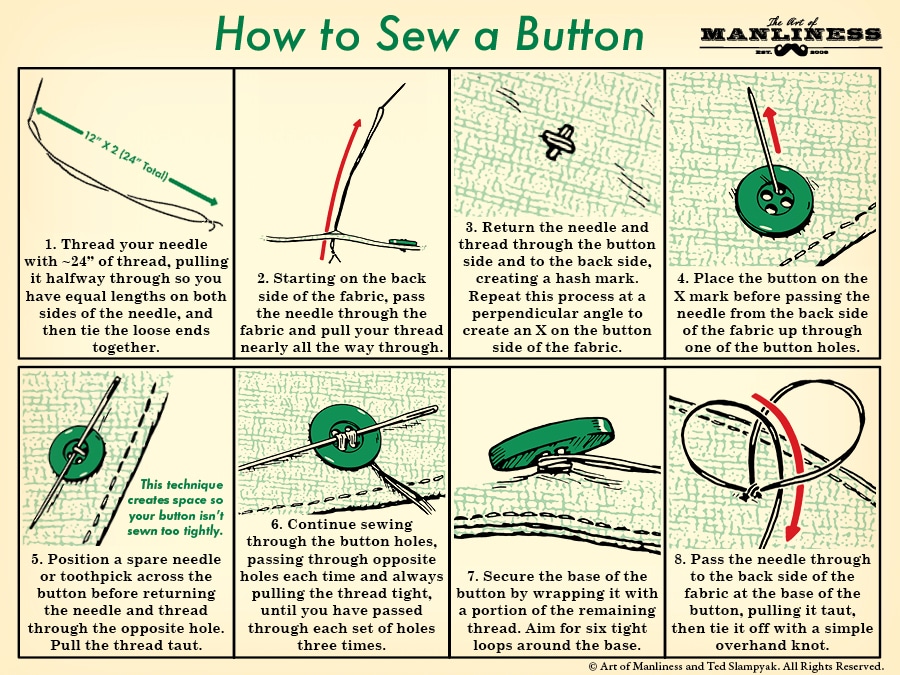How to Sew: Stitch Your Way to Creative Mastery

To sew, start by selecting a suitable fabric and thread. Then, thread your sewing machine, position the fabric under the needle, and lower the presser foot.
Begin sewing by guiding the fabric through the machine, ensuring a straight and even stitch. Practice on scrap fabric first to improve your skills before moving on to more complex projects. Sewing requires patience and precision, so take your time and enjoy the process of creating something unique and beautiful.
With practice, you’ll become more confident and proficient in your sewing abilities. So, let’s get started and unleash your creativity through the art of sewing!
Getting Started With Sewing
Embark on your sewing journey by mastering basic stitches and selecting the right fabric and thread. Practice on scrap material to enhance your skills before moving on to simple projects. With patience and dedication, you’ll soon be creating beautiful handmade items.
Sewing is a fun and rewarding hobby that can save you money and provide you with unique and personalized items. If you are new to sewing, it’s important to start with the right tools and fabrics to ensure a successful project. In this post, we’ll cover the basics of getting started with sewing and provide tips on how to choose the right tools and fabrics for your project.
Choosing The Right Tools
Before you start sewing, you’ll need to invest in some basic tools. Here are the essential tools that you’ll need to get started:
| Scissors | Measuring tape | Sewing machine |
| Sewing needles | Pins | Iron and ironing board |
Make sure to choose high-quality tools that will last you a long time. You don’t have to buy the most expensive tools, but investing in good quality tools will make your sewing experience much more enjoyable.
Selecting Fabrics
Choosing the right fabric for your project is important to ensure a successful outcome. Here are some tips to keep in mind when selecting fabrics:
- Consider the weight and drape of the fabric. Heavier fabrics are better suited for structured projects, while lighter fabrics are better for flowy projects.
- Check the care instructions for the fabric. Some fabrics require special care, such as dry cleaning or hand washing.
- Consider the color and pattern of the fabric. Choose a color and pattern that will complement your project and your personal style.
- Buy a little extra fabric than what you need. This will give you some wiggle room in case of mistakes or changes to the project.
With these tips in mind, you’ll be able to choose the right tools and fabrics for your sewing project. Happy sewing!
Basic Sewing Techniques
How to Sew? Basic Sewing Techniques are essential for both beginners and experienced sewers. These foundational skills form the basis of every sewing project, ensuring precision and durability in your creations.
Hand Stitching Basics
Hand stitching is a versatile skill that allows for detailed and intricate work. Learning the proper techniques will enhance your sewing abilities.
Introduction To Machine Sewing
Machine sewing is efficient and fast, making it ideal for larger projects. Understanding the basics of machine sewing is crucial for any aspiring sewer.
Reading And Understanding Patterns
When it comes to sewing, one of the most important skills you need to master is reading and understanding patterns. Patterns are like roadmaps that guide you through the sewing process, helping you create beautiful garments and projects. In this section, we will explore two key aspects of pattern reading: deciphering symbols and terms, and altering patterns for fit.
Deciphering Symbols And Terms
When you first open a sewing pattern, you might feel overwhelmed by the various symbols and terms scattered throughout the instructions. But fear not! With a little practice, you’ll become fluent in this pattern language.
To start, let’s take a look at some common symbols you’ll encounter:
| Symbol | Meaning |
|---|---|
| Placement mark | |
| ▬ | Pattern notches |
| ⬢ | Buttonhole placement |
| ◆ | Dart |
Understanding these symbols will help you follow the pattern instructions more easily. Additionally, it’s important to familiarize yourself with common sewing terms, such as:
- Right side of fabric
- Wrong side of fabric
- Seam allowance
- Gather
- Hem
Knowing these terms will enable you to interpret the instructions accurately and execute each step with confidence.
Altering Patterns For Fit
Not everyone has the same body shape or size, which is why it’s crucial to learn how to alter patterns for a perfect fit. Whether you need to adjust the length, width, or proportions of a pattern, understanding the basics of pattern alteration will give you the freedom to customize your garments.
Here are a few common alterations you may need to make:
- Lengthening or shortening a pattern
- Adding or reducing ease
- Adjusting dart placement
- Grading between sizes
By mastering these alteration techniques, you’ll be able to create garments that flatter your unique body shape.

Credit: www.artofmanliness.com
Sewing Your First Project
Embark on your sewing journey by starting with a simple project. Gather essential supplies like fabric, thread, and needles. Follow beginner tutorials to learn basic stitches and techniques for a successful first sewing experience.
If you’re new to sewing, starting with a simple project can help you build confidence and develop your skills. With the right guidance and a few basic tools, you can create something beautiful and functional in no time. In this post, we’ll explore some simple projects for beginners and provide tips on how to add the finishing touches that will make your project stand out.
Simple Projects For Beginners
When choosing your first sewing project, it’s important to start with something that is both achievable and enjoyable. Here are a few ideas for simple projects that are perfect for beginners:
- A tote bag
- A pillowcase
- A simple skirt
- A drawstring bag
These projects require only basic sewing skills and can be completed in a few hours or less. Once you’ve completed your first project, you’ll have the confidence to tackle more complex projects.
Finishing Touches
Adding the right finishing touches to your project can take it from ordinary to extraordinary. Here are a few tips on how to add those finishing touches:
- Iron your project: Before adding any finishing touches, make sure your project is properly pressed. This will help it look neat and professional.
- Add trim: Adding trim such as piping or ribbon can add a pop of color and texture to your project.
- Use decorative stitches: Many sewing machines come with decorative stitches that can add visual interest to your project.
- Add embellishments: Buttons, beads, and appliques can all be used to add a personal touch to your project.
By following these tips, you can take your simple project to the next level and create something that you’ll be proud to show off. Remember, the key to successful sewing is practice, so don’t be afraid to try new things and make mistakes along the way.
Advanced Sewing Skills
Working With Difficult Fabrics
When working with challenging fabrics, it’s crucial to use the right tools and techniques. Silk, leather, and velvet can be particularly tricky to work with due to their delicate nature. Here are some tips for handling these difficult fabrics:
- Use a sharp, fine needle to prevent snagging or tearing the fabric.
- Consider using tissue paper or a walking foot to stabilize the fabric during sewing.
- Practice on scraps before working on the actual garment to get a feel for the fabric’s behavior.
Mastering Zippers And Buttons
Adding zippers and buttons to garments requires precision and attention to detail. Here are some tips for mastering these essential sewing skills:
- Invest in a quality zipper foot for your sewing machine to ensure neat and even zipper insertion.
- Secure buttons with a strong thread and use a button foot attachment for accurate placement.
- Practice sewing buttonholes on scrap fabric to perfect your technique before sewing them on your garment.

Credit: www.youtube.com
Creative Sewing Projects
If you enjoy sewing and want to explore your creativity, then you’ll love these creative sewing projects. From crafting personalized gifts to sprucing up your home decor, there are endless possibilities to showcase your sewing skills.
Crafting Personalized Gifts
Handmade gifts are always special and sewing allows you to create personalized items that your loved ones will cherish. Whether it’s a custom-made tote bag, a monogrammed pillowcase, or a cozy quilt with embroidered initials, these thoughtful gifts are sure to make a lasting impression.
Here are a few personalized gift ideas to get you started:
- Create a set of embroidered handkerchiefs with unique designs for each recipient.
- Make a personalized fabric photo album cover, complete with the recipient’s name.
- Sew a custom apron with a fun print or a favorite quote for the aspiring chef in your life.
Home Decor Ideas
Sewing can also be a great way to add a personal touch to your home decor. Whether you want to revamp your living room, bedroom, or kitchen, there are endless possibilities to explore.
Consider these home decor ideas that you can easily sew:
- Create unique throw pillow covers with different fabrics and patterns to match your interior.
- Sew your own curtains or window treatments to add a touch of elegance to any room.
- Make a stylish table runner or placemats to enhance your dining area.
With a little creativity and some sewing skills, you can transform your space into a personalized haven that reflects your style and personality.
Sewing For Fashion
Sewing for Fashion opens up a world of creativity and self-expression. Designing Your Own Clothes and mastering The Art of Tailoring allows you to showcase your personal style and create unique pieces that fit perfectly.
Designing Your Own Clothes
Designing Your Own Clothes gives you the freedom to bring your fashion ideas to life. Create garments that reflect your personality and stand out from the crowd.
- Choose fabrics that inspire you
- Sketch your designs on paper
- Take accurate body measurements
The Art Of Tailoring
The Art of Tailoring is the key to achieving a professional finish in your fashion projects. Mastering tailoring techniques will elevate the quality and fit of your handmade garments.
- Learn how to make precise alterations
- Practice different types of seams and finishes
- Understand the importance of pressing and ironing

Credit: www.pinterest.com
Troubleshooting Common Sewing Problems
Learn how to troubleshoot common sewing problems with our easy-to-follow guide. From fixing tension issues to dealing with broken needles, we’ve got you covered. Master the art of sewing with confidence and tackle any sewing mishaps that come your way.
Fixing Thread Tension Issues
Sewing machines can have thread tension problems due to misaligned settings.
Dealing With Broken Needles
Broken needles are common in sewing; always have spares nearby. Troubleshooting Common Sewing Problems: Sewing can be frustrating when things go wrong. Here are solutions to two common issues:
Fixing Thread Tension Issues
– Check upper and lower thread tensions to ensure they match. – Ensure the bobbin is threaded correctly. – Clean the machine and rethread it before sewing again.
Dealing With Broken Needles
– Replace broken needles with spares. – Inspect the machine for any sharp edges causing breakage. – Use the correct needle size for the fabric being sewn.
Frequently Asked Questions
How Do I Choose The Right Fabric For My Sewing Project?
Select a fabric that complements your project in terms of weight, drape, and stretch. Consider the care instructions and the final look you want to achieve. Natural fibers like cotton and linen are great for beginners, while stable knits work well for stretchy garments.
What Are The Essential Tools For Sewing?
Essential sewing tools include a sewing machine, needles, thread, fabric scissors, pins, a seam ripper, and measuring tape. Additionally, consider having a cutting mat, rotary cutter, and tailor’s chalk for precise cutting and marking.
Can I Hand-sew Instead Of Using A Machine?
Hand-sewing is a viable option, especially for small projects or intricate details. It allows for greater control and precision. However, a sewing machine is more efficient for larger or repetitive tasks, making it suitable for most sewing projects.
Conclusion
Sewing is a rewarding and creative skill to learn. With practice and patience, you can master different sewing techniques and create unique, personalized items. Whether it’s repairing clothes or making new garments, sewing offers a sense of accomplishment and self-sufficiency.
Embrace the joy of sewing!





